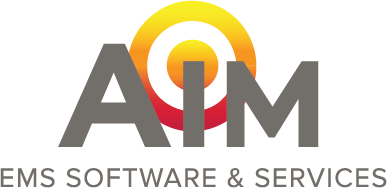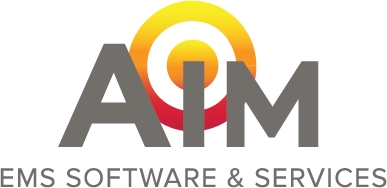
When it comes to staffing an in-house EMS billing function, hiring skilled employees is only half the battle. It’s equally critical to onboard new billers effectively, empowering them to get complete and accurate bills out fast so you can maximize reimbursement and cash flow.
AIM knows it's tough to hire and onboard new billers successfully, because we’ve tackled this challenge many times. As a provider of outsourced EMS billing services, we know what it takes to ensure our billing team is equipped to succeed. And as a provider of cloud-based EMS Billing Software, we’re committed to ensuring the agencies that use our technology can get their billers productive quickly.
Based on our experience, here are the top seven tips for onboarding ambulance billers.
Tip #1: Get Your Processes and Workflows in Order
You certainly don’t want to train new billers on suboptimal processes or workflows that aren’t as logical and streamlined as they could be. Before onboarding new hires, take a critical look at your procedures and ensure they optimize EMS biller efficiency, accuracy, and compliance.
For example, check that the workflows within your EMS billing software guide each step in the process to save billers time, improve their work quality and efficiency, and ensure no billing task is forgotten or delayed. Solutions like AIM’s EMS Billing Software enable you to customize your billing workflow calendar, so new hires know which activities need to occur daily, weekly, or monthly. And before onboarding your next new biller, make sure you’re using the billing software to house important procedural documents, including SOPs.
Tip #2: Take a Phased Approach to Onboarding
Since ambulance billing is complex and more nuanced than general medical billing, avoid the risk of overwhelming new hires. AIM finds that a phased approach to onboarding EMS billers can help to smooth the transition.
We recommend starting new staff on pre-billing tasks like insurance verification. Once they’re comfortable, they can move on to more complicated aspects of the job, like coding bills, and eventually post-billing tasks like payment posting. Along the way, check their work for quality and accuracy before introducing new tasks.
Tip #3: Follow Training Best Practices
Whether you’re handling training internally or using a third party, a well-conceived training plan can make all the difference in getting new EMS billers up and running. AIM finds that live training helps get EMS billers productive faster and more confidently than pre-recorded sessions. And of course, the training plan should include plenty of opportunities to become acclimated and proficient with the EMS billing software. Tap your software vendor for training that delves into the features and functionality of their solution, ensuring billers can get the most out of the software. If you choose EMS billing software from a provider with deep experience in the EMS industry, you’ll get the added benefit of trainers who are well-versed in the billing function and provide valuable tips beyond the software.
Tip #4: Spend Ample Time on Bill Coding
A properly coded bill improves reimbursement, reduces claim denials, helps prevent audit problems, and improves cash flow. But coding EMS bills is complex, so make sure your new billers fully understand what’s involved.
For example, they need to know how to code transport origins and destinations properly, in accordance with guidelines like those provided by the Centers for Medicare and Medicaid (CMS). New EMS billers also need to learn the different mileage scenarios involved in patient transport and how they impact ambulance billing, especially when it comes to ensuring correct payment for a medically necessary transport. For reasons like these, it’s critical to spend sufficient time reviewing the ins-and-outs of EMS bill coding.
Tip #5: Make Sure They Understand the Nuances
EMS billing is fraught with subtleties that might not seem important to a new biller at first glance, but make a big difference in claim approval and reimbursement. A hospice transport is a prime example: A patient with Medicare Part A is entitled to receive hospice care benefits (including transportation services related to this diagnosis) once they select a hospice provider. So while ambulance transportation usually falls under Medicare Part B, that’s not the case when the patient approves the hospice elective and the transport relates to their terminal condition.
Hospice transport is one of many scenarios where nuances impact EMS billing. Take the time to educate new EMS billers on situations where these distinctions come into play.
Tip #6: Don’t Shortchange Denials
If a claim is denied or rejected, it’s critical that your EMS billers handle the situation quickly and effectively. For instance, they need to understand how each payer handles claim denials and the processes they expect you to follow. Many agencies find it helpful to update their EMS billing software with payer preferences for claim denials and other processes, providing a handy reference tool for new and tenured staff.
And since time is of the essence, consider equipping new billers with guidelines on the expected turnaround time for claim denial responses.
Tip #7: Recommend Using Alerts and Notifications
With so much to remember, both new and tenured EMS billers can benefit from reminders that ensure they complete required tasks correctly and on time. During onboarding, show new billers how to set up alerts and notifications within your EMS billing software. In AIM’s experience with EMS agencies across the country, billers find it helpful to get reminders about payer-specific and state-specific billing code requirements and alerts about deductible holds, among many others. It's also beneficial to add notifications targeted toward new EMS billers to support their learning.
AIM Software Equips EMS Billers for Success
One of the best ways to onboard EMS billers effectively is to equip them with robust, easy-to-use software that speeds and simplifies their work. AIM’s EMS Billing Software helps in-house billers at hundreds of EMS agencies work quickly and efficiently to maximize reimbursement, enhance efficiency, and improve cash flow. Our software is purpose-built for EMS operations by a team with decades of EMS industry experience—so you can be sure it includes all the features your billers need to support your revenue cycle management.
Schedule a demo of the AIM EMS Billing Software. Or request a free evaluation of your billing process.



